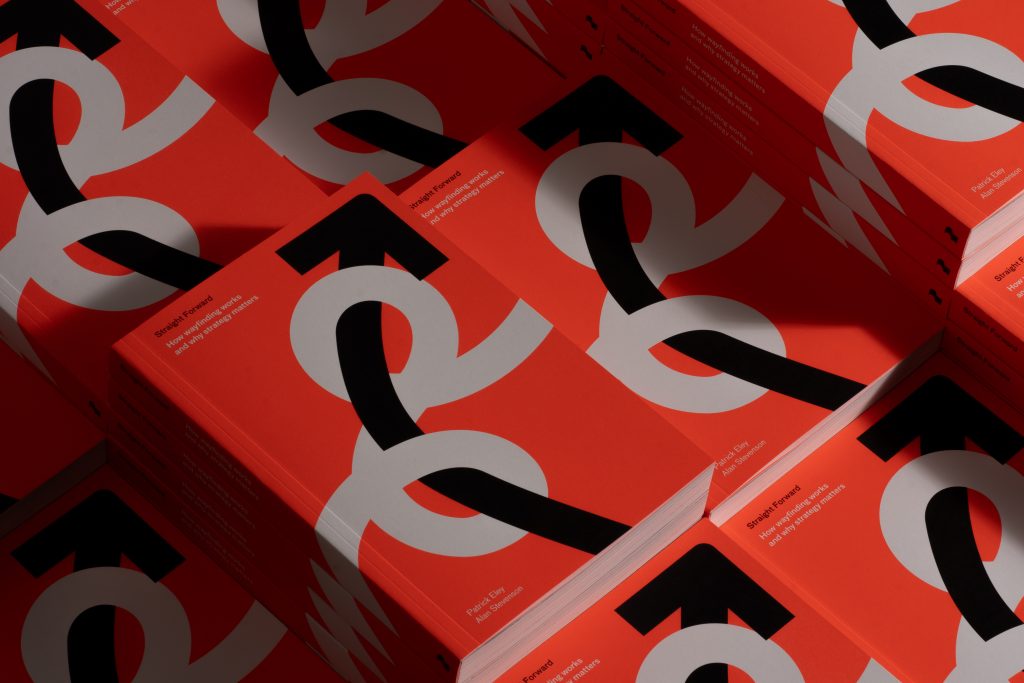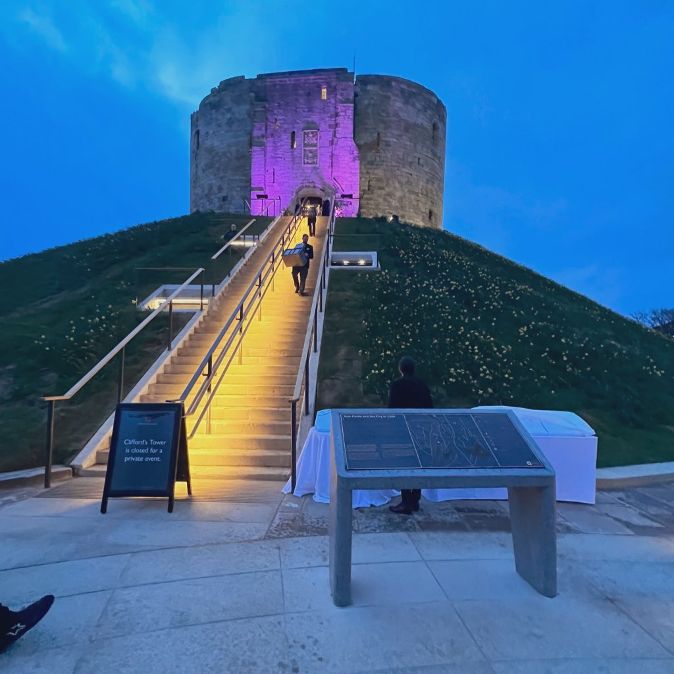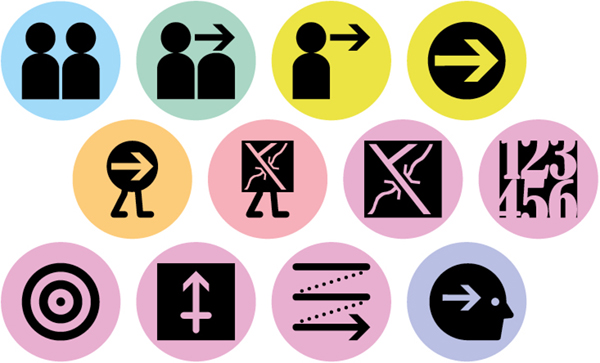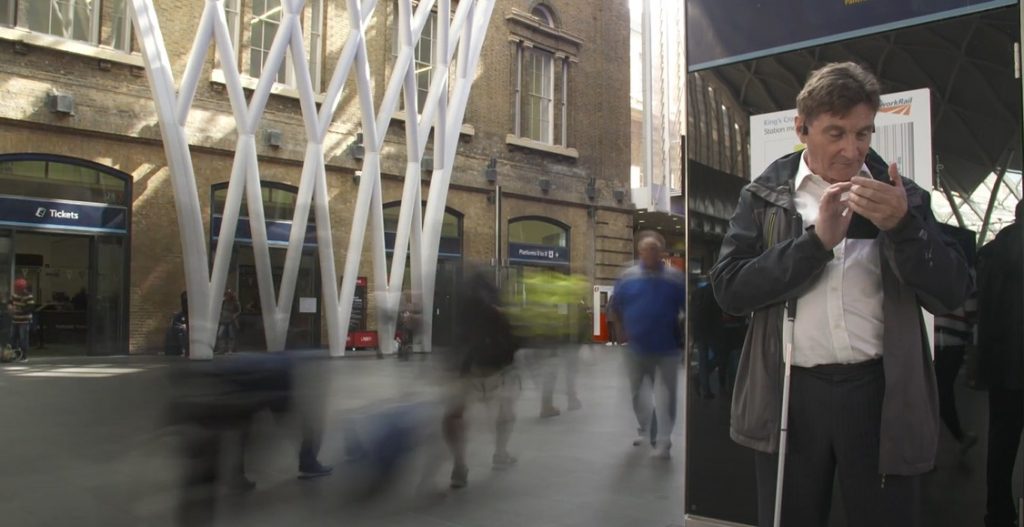The Society offers a regular programme of talks designed to inspire, improve practice and encourage innovation. We cover a wide range of topics from design and associated disciplines to academic research, technology, processes and standards.
Our talks are usually monthly, with most still online via Zoom (recordings are posted in the talks archive). However, we are now offering quarterly in-person events in central London too.
Upcoming talks
There are no events.
Past talks
Recordings of the past talks are available for members.

So after nearly 50 years of combined experience we are sharing our joy, wisdom and insight for this place making puzzle by writing a book about it. In our book, we’ve broken down the mechanics of wayfinding strategy, from theory to design and from physical to digital. We are not so presumptuous as to think that ours is the only way to design wayfinding schemes, it’s what we’ve learnt and what has worked for us over the years . . . and it really is straight forward.
Read more
Join us for this crash course seminar in sustainable signage illumination, with Applelec’s Lauren Flint. Lauren goes back to basics: dispelling myths, busting the jargon and explaining the key features you need to look for in your illumination solution and what that means for your signage/wayfinding designs, as well as for the end user. By the end of this session, Lauren hopes to have given you the confidence to identify the right solutions and talk to your customers about the sustainable benefits of your products.
Read more
This talk, by Alastair Somerville of Acuity Design, used examples from projects for Imperial War Museum, English Heritage, National Trust, and Transport for Manchester to show how a sequence of wayfinding materials that pay attention to the active interaction of an individual’s capacities in relation to the organisation’s capabilities can help people to find their […]
Read more
You are invited to an exciting, in-person symposium, organised by SDS and SEGD London, with six expert speakers: Veronika Eggar, Simon Kinneir, Liam Proudlock, Rachel Smalley, Neil Smith, Rosie Smith and Alexandra Verdeil.
Read more
14 March 2024 (1pm GMT) Nourhan Bassam, author of recently published ‘The Gendered City‘, delved into the challenges faced by women and marginalised groups in urban environments, and explored the need for inclusive and gender-sensitive urban design. She presented a range of viewpoints on understanding and addressing the experiences and perspectives of women in cities, […]
Read more
This content is limited for members only Within our member-only pages we provide a wide range of useful information resources including: Recordings of our talks Presentations Academic research papers Case studies Guidance on standards and good practice Project opportunities Join the SDS today to access our priviliged member-only information. SDS members and other registered site users: to choose, […]
Read more
In this talk, Urgent.Agency’s Michaela Pihl Olsen and Rose Marie Zeynoun spotlight two aspects that often shape our understanding of way finding and inclusive design. Firstly, they delve into the perception gap surrounding wayfinding: how it is commonly perceived versus what it actually entails. Secondly, they shine a light on a common misconception among designers, exploring how inclusive design is sometimes as a burden rather than a creative opportunity.
Read more
This content is limited for members only Within our member-only pages we provide a wide range of useful information resources including: Recordings of our talks Presentations Academic research papers Case studies Guidance on standards and good practice Project opportunities Join the SDS today to access our priviliged member-only information. SDS members and other registered site users: to choose, […]
Read more
Join us online via Zoom at 1pm GMT on Thursday 16 November ’23 to hear wayfinding designer Jaap Knevel share insights from his Master’s thesis, ‘There must be other ways’ which concluded a two year artistic research project at the Department of Visual Communication at Konstfack University in Stockholm, Sweden. Jaap discusses the lessons learned from engaging with different groups who challenge the norms of wayfinding design, shares the personal experiences that led him to question his creative preconceptions, and reflects on a series of experimental maps, signs, and pictograms he created as a reaction.
Read moreJoin us online or in person on the evening of 19 October for our autumn party. We have talks by Doug Rose and Sean Brereton, an informal celebration of the contributions made to the work of the Sign Design Society by three former Steering Group members. and the launch of the new edition of the Sign Design Guide.
Read moreThis content is limited for members only Within our member-only pages we provide a wide range of useful information resources including: Recordings of our talks Presentations Academic research papers Case studies Guidance on standards and good practice Project opportunities Join the SDS today to access our priviliged member-only information. SDS members and other registered site users: to choose, […]
Read moreOur speakers Sander Baumann (/designworkplan) and Robin Howie (Fieldwork Facility) join us to share their varied and innovative approaches to using sustainable design in their placemaking and wayfinding work.
Read more
In 2006, Michèl Verheem founded ID-LAB in Melbourne, Australia. At that time, designers in Australia were creating sign systems that looked good but didn’t always function as well as hoped, and the term “wayfinding” wasn’t that widely used.
Read more
David Barrie describes some of the key navigational mechanisms animals use, including path integration, the use of the sun, moon and stars, the sense of smell, as well as the earth’s magnetic field.
Read more
Join us at Franco Manca London Bridge from 5pm for an informal catch-up over a beer and maybe something to eat. With the twilight tour of the Borough Yards development starting at 6.15pm GMT.
Read more
On the eve of the anniversary of the invasion of Ukraine, we welcome Katya Kadurina from Studio MoreInfo to share a uniquely Ukrainian perspective on wayfinding design.
Read more
As women, girls, and gender diverse people, the public spaces of the city are not designed for us. They do not reflect our needs. We must adapt to them. This is the case all around the world. As we move through urban spaces, we are often filled with fear rather than confidence. Concerns for our […]
Read more
This content is limited for members only Within our member-only pages we provide a wide range of useful information resources including: Recordings of our talks Presentations Academic research papers Case studies Guidance on standards and good practice Project opportunities Join the SDS today to access our priviliged member-only information. SDS members and other registered site users: to choose, […]
Read more
Attendees can expect to learn about what some might regard as basics such as tonal contrast, but also about more advanced subjects such as sensory processing, sensory noise, sensory overload, and the significance of context to memory. The relevance and paradoxes of choice and permission also feature in the talk.
Read more
How do you make visiting the National Museum, Norway about more than just viewing Edvard Munch’s ‘The Scream’? This was a key question asked by the client team for the new National Museum, and one that Endpoint were tasked to address and solve.
Read more
For this hybrid event, Tim Fendley talks about how to create a legible city. From the perspective of three interlinking factors: an understanding of people and their emotions; institutions and how they behave; and the capability of technology.
Read more
From her experience as a designer and a doctoral researcher, Colette explains the different ways people navigate, six key influences that cause waylosing and how designers can help create inclusive, navigable environments.
Read more
Heike Nehl and Sibylle Schlaich from Moniteurs explore the unique identities and wayfinding systems at over a hundred airports, sharing past stories, current challenges and promising future trends for navigating airports around the world.
Read more
Professor Terry talk shares his experiences of outdoor navigation for adventure activities. He introduces a new group he has set up and chairs, the Outdoor Adventure Navigation Special Interest Group within the Royal Institute of Navigation (RIN).
Read more
There are two key means to help people with vision impairments to find their way through the built environment. The first is by making structural alterations to the build environment so that it better meets their particular needs. The second is by creating technology to assist people with vision impairments, providing them with the information that they are unable to access due to their limited sight. In this talk we’ll be focussing on the second of these: assistive technologies to help wayfinding for vision impaired people.
Read more